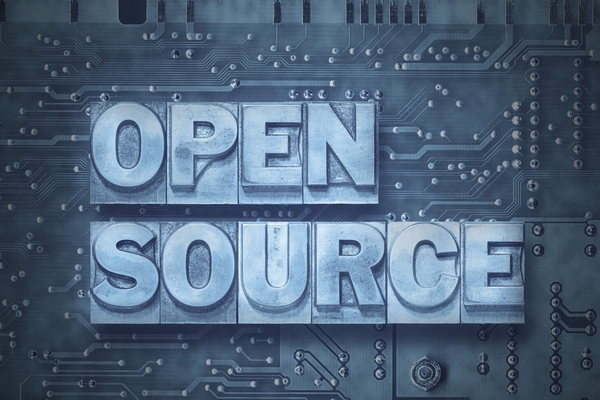AI deployment: a practical and pragmatic approach

Maksim Belov at Coherent Solutions explains why successful AI adoption relies on fostering a hybrid model between AI technology and human input
As a stark frontrunner for this year’s tech industry ‘hot topic’, artificial intelligence has prompted the emergence of a binary consensus surrounding its deployment and use.
Accepting the evident pros and cons of AI technology, businesses around the globe have witnessed the helter-skelter dawn of an ‘AI era’. As highlighted by IBM in their 2024 ‘Global AI Adoption Index’, over half of companies surveyed (59%) are already active stakeholders in AI tech and intend to accelerate investments in this area moving forward.
However, with companies keen to retain their commercial foothold amidst ruthless competition, the apparent universality of AI forces organisations to act in haste when implementing new strategies. While the promise of a streamlined transition to increased productivity seems hard to pass up, some industries are still applying the breaks on AI adoption, cautiously raising the question – will AI render existing human roles obsolete?
It’s crucial to remember one fundamental concept when addressing this misconception. AI is not an entity, but rather a supplementary tool deployed to support those that enable it. Exemplified by the failed McDonald’s rollout of AI operated order systems, the technology won’t always prevail on its own.
Similarly, in rushing to market, businesses investing in AI technology are largely failing to generate ROI, causing investors to shift their focus elsewhere. With “too much spend, too little benefit” (as suggested by analysts at Goldman Sachs), a viable payback period becomes increasingly uncommon on significant AI investments.
Whilst continued AI breakthroughs remain a foregone conclusion, even the ‘Magnificent Seven’ tech tycoons remain wary of the rapidly increasing cost of leaning on AI-lead initiatives. If businesses were to take a more considered approach to AI deployment with incremental investments and sufficient human intervention, perhaps there would be a greater proportion of success stories at corporate level.
Here are a few ways in which organisations can ensure their AI deployment efforts come to fruition.
Revolution isn’t necessary; practicality is
Supported by a recent decline in combined share prices of 11.8% from last month’s peak, shareholders in the big seven tech companies are questioning adequate ROI where AI has been rolled out in line with an industry boom. Eager to get ahead of competitors in the field, organisations often surrender to costly digital transformation strategies.
In being overly ambitious and lacking the necessary foresight to proceed with caution, many companies are faced with substandard ROI following deployment of their AI technologies.
Instead of pouring investment into the loose promise of improved productivity, organisations must first take stock of their current objectives. Only in considering where AI can support and supplement an existing workforce can businesses deduce an appropriate and realistic direction in which to proceed.
To ensure effective functionality and maximise ROI on any AI project, thorough process analysis must first dictate where AI can survive and thrive as part of the existing business model. Whether intended to support internal or external processes, it is essential that organisations establish a concrete action plan.
Finding ways to measure success, considering usership, and perfecting the scale of function are key to a focused transformation project.
The automation of a singular process – menial tasks such as invoice processing – could make all the difference. This gradual step-by-step approach is vital to measuring success and ensuring ROI. Once a suitable department and specific operation is put forward for efficient AI integration, investments are likely to prosper, thereby opening doors to widespread transformation over time.
Whilst people are right to be cautious of AI and its continued evolution, there is no doubt that end-users can benefit from generative technologies. When realistic goals are established and measured in detail, disciplined pragmatism can guide comparatively small-scale investments and ensure the profitability of AI adoption.
AI maturity is the foundation
AI maturity measures the ability of a business to absorb generative technologies based on existing expertise, infrastructure, and strategy. Once the basis of an implementation strategy is finalised, it is vital to plan objectives with a realistic portrait of an organisation’s AI readiness in mind.
First, organisations must assess the technological framework expected to support such powerful innovation by examining the existing tech stack. Exercising foresight and staying one step ahead of any compatibility issues or technical weaknesses that might ensue. If an infrastructure lacks the ability to handle subsequent AI output with well-defined workflows, any investment in the technology is essentially redundant.
This goes for the data that will be used to train the models as well. Whether producing AI models in-house or sourcing solutions externally, the quality of training data will dictate success from the ground up.
As ever, AI maturity cannot be measured without considering the critical role that humans play in enabling the technology. When assessing the preparedness of existing employees and how they might take to the novelty of AI, gaps are inevitable.
However, whilst leeway must be considered, a greater inevitability is the prospect of poor ROI if a core understanding of AI is absent across the workforce. Technical confidence is a true asset to any organisation undergoing digital transformation.
Setting aside budget and time to foster robust skillsets through bespoke training methods and premeditated recruitment is critical in deployment of any new technology, but especially one as complex as AI.
Cyber-risk must remain a concern
Cyber-security around AI is a twofold problem. The introduction of AI to a network inevitably widens its attack surface, opening the door to unforeseen complications surrounding data protection and system vulnerabilities. AI transformation facilitates the possibility of new, sophisticated types of attacks that manipulate and poison input data, escalating the complexity and scale of threats imposed on the organisation.
Taking this into account, security discussions surrounding the deployment of AI solutions need to start from the very beginning. To mitigate system defects and reduce the risk of adversarial attacks, the development stage must include regular system design reviews and focused analysis to establish where security needs to improve pre-launch. On-going reviews and security testing must follow, to ensure systems remain uncompromised post-launch.
The capabilities of AI as both a data processing tool and a threat are seemingly boundless; as such, taking a holistic approach to security is the best way for organisations to safeguard their models against sophisticated threats and a widening attack surface.
Alongside the quality of data used to inform AI models, use policies are integral to ensuring compliance with regulatory bodies whilst maintaining the focus of new technologies. A general awareness of relevant policies is particularly pertinent with Peter Kyle, the UK Science Secretary, commissioning an ‘AI Action Plan’ that is due for imminent action.
Airtight guidelines and safeguards for the benefit of end-users will allow for profitable longevity and a smoother transition to AI. Coupled with stringent process discipline, a tech confident core of employees under the influence of specialised training won’t go far wrong.
As AI technology continues to govern the digital age, organisations must prioritise practicality and pragmatism when making decisions. By optimising resources, establishing a realistic timeline, and taking things one step at a time, organisations will place themselves in good stead for ROI amongst competitors who act in haste.
One needs only to refer to Aesop’s fable of ‘The Tortoise and the Hare’ for guidance.
Maksim Belov is Chief Technical Officer at Coherent Solutions
Main image courtesy of iStockPhoto.com and Khanchit Khirisutchalual

Business Reporter Team
Most Viewed
Winston House, 3rd Floor, Units 306-309, 2-4 Dollis Park, London, N3 1HF
23-29 Hendon Lane, London, N3 1RT
020 8349 4363
© 2025, Lyonsdown Limited. Business Reporter® is a registered trademark of Lyonsdown Ltd. VAT registration number: 830519543





